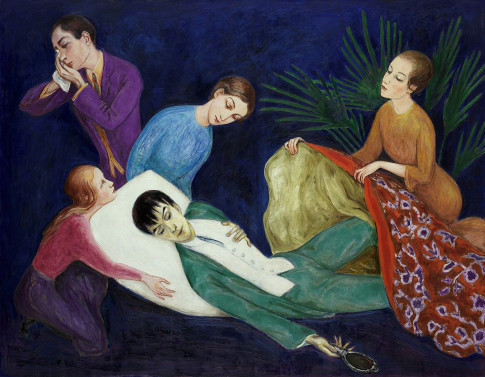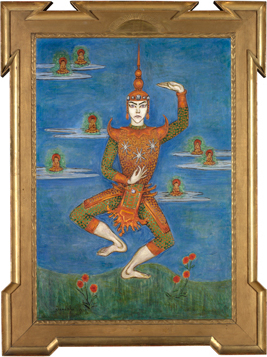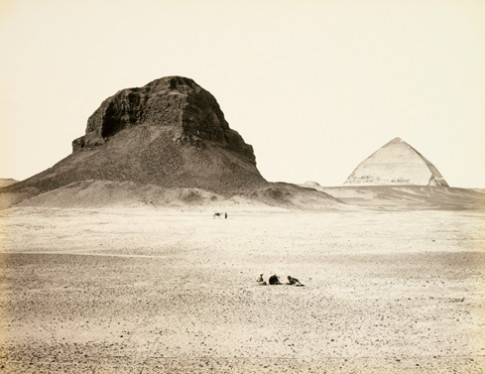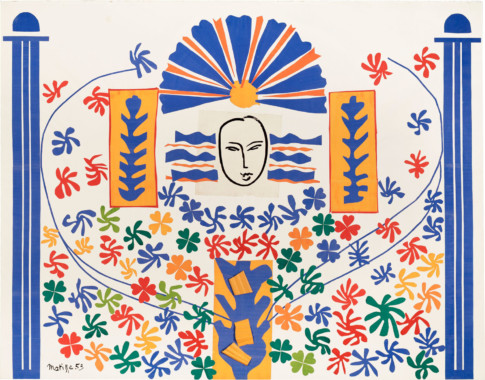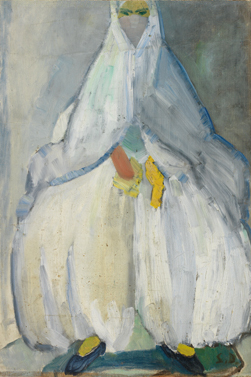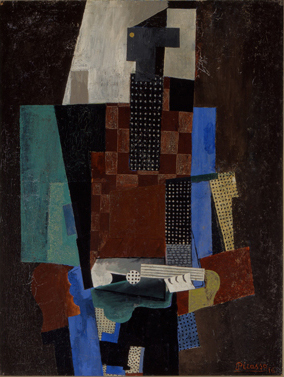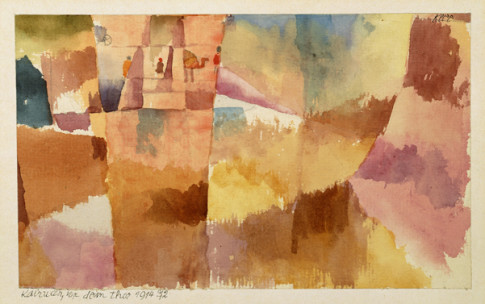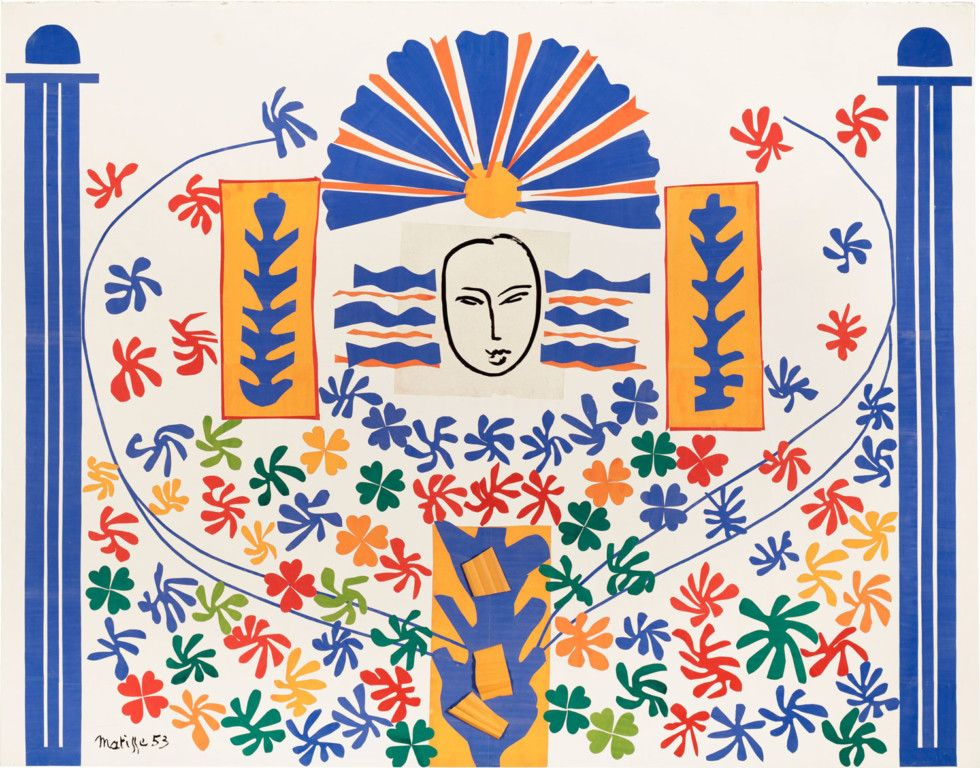
Henri Matisse, Apollo, 1963 © Succession H Matisse/BUS 2011
Henri Matisse, Fernand Léger, Alexander Calder and Martha Graham
The artist often asserted that color is a subject in its own right and has its own kind of beauty. As a young man Matisse had been fascinated by the colors of Japanese chirimen crepe cloth, which he said were “expressive but not necessarily descriptive.” He later claimed that his first artistic revelation had come from the Orient. Interestingly enough, there are obvious parallels between Matisse’s great collage of 1953 and the stage sets and costumes in oriental style he produced in 1920 for the Russian Ballet’s production of The Nightingale with music by Stravinsky.
When Alexander Calder came to Paris in 1926 he had already worked for several years as a mechanical engineer in the United States. In Paris he began to make “drawings in the air”—small wire figures he later developed into a full miniature circus controlled by the artist himself and accompanied by gramophone music. Here we find circus directors, lion tamers, and acrobats inspired by Parisian vaudeville scenes as well as performers like Josephine Baker.
Calder became increasingly fascinated by the art of dance and theater and began to describe his works as mobiles or ballet-objects. An early example is The White Frame, in which a number of geometric elements execute a kind of mechanical ballet on the “stage” formed by the white frame. In the 1930s, Calder began to collaborate with the choreographer Martha Graham, who was then revolutionizing modern dance in the United States with completely new patterns of movement.

